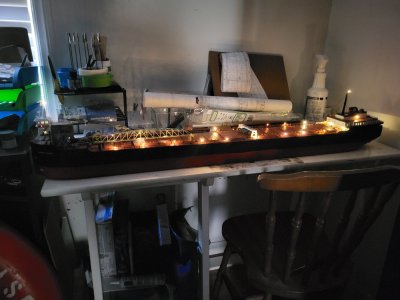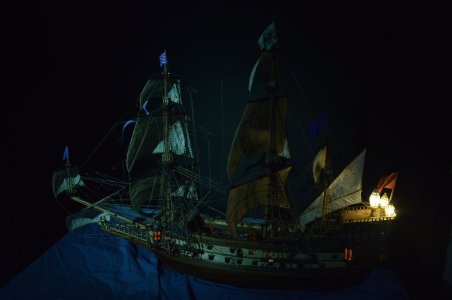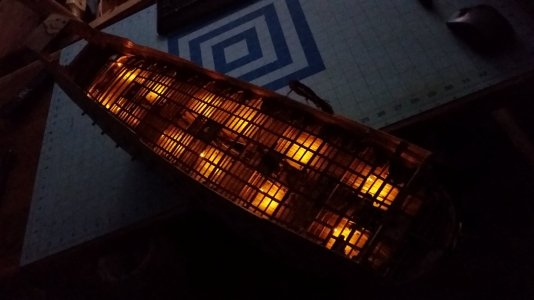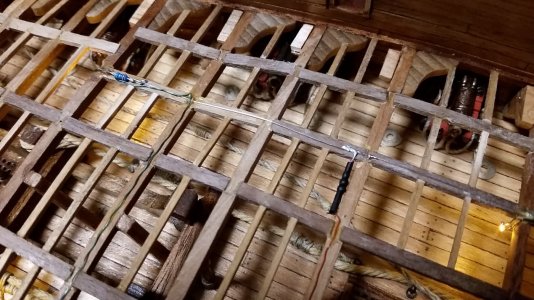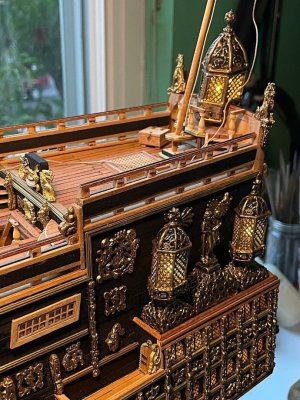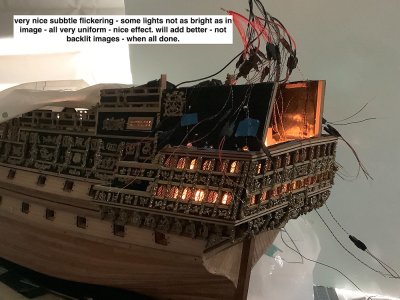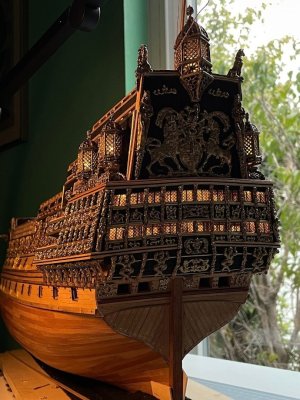Good day all,
As I learn and perfect my skills I find myself in a competition with myself to up my game with every new build I undertake. As most of you should know by now - I primarily focus on modern bulk carrier (and their variations, eg. self unloaders) that ply the Great Lakes. My current build (which I have no build log, but will post the final photos when it is done) is my first attempt at a self unloader.
With that being said......I pondered the application of micro LED lights to represent at least some of what would be present on a real ship. Mainly the mast light (front and back), as well as port/starboard, as these would be the basics if I am not mistaken. I was able to accomplish this as an afterthought on my list build (I have to find the right pic(s) and will update this post later) when my build was 90% complete, so had to try to find ways to hide all the wiring as best I could. I will say I think it looks really cool, especially with the room lights off, but there is a mess on my model with the wiring, as I wasn't going to spend a crazy amount of time rebuilding.
I am at a stage now where I can attempt to run the above mentioned lighting, as well as some other lights that would be mostly run at night (interior lighting in the various decks, some exterior lighting) as well as the lights that run along both sides of the spar deck - on a 740 foot long ship this an be quite a lot! However.....having already purchased the lighting I am realizing that it might be a project not worth going forward with. These micro led lights (Evan Design) need to be wired up and thus connected to a power source (I have a 2 AA battery pack with switch) that has to be mounted externally. I would have to solder everything together (red to red green to green) inside my hollow hull and probably have to have a void where the wires would come out of the model to the power source. Would this ruin the model? - of course that side could be the non-viewed side of my display. How would I access the wiring once everything is secured down (I guess I wouldn't be able to?)? I am now thinking that it might not worth the endeavour at all aside from the the P/S and mast lights......
Thought I'd throw this out here and see what you all have to say.
As I learn and perfect my skills I find myself in a competition with myself to up my game with every new build I undertake. As most of you should know by now - I primarily focus on modern bulk carrier (and their variations, eg. self unloaders) that ply the Great Lakes. My current build (which I have no build log, but will post the final photos when it is done) is my first attempt at a self unloader.
With that being said......I pondered the application of micro LED lights to represent at least some of what would be present on a real ship. Mainly the mast light (front and back), as well as port/starboard, as these would be the basics if I am not mistaken. I was able to accomplish this as an afterthought on my list build (I have to find the right pic(s) and will update this post later) when my build was 90% complete, so had to try to find ways to hide all the wiring as best I could. I will say I think it looks really cool, especially with the room lights off, but there is a mess on my model with the wiring, as I wasn't going to spend a crazy amount of time rebuilding.
I am at a stage now where I can attempt to run the above mentioned lighting, as well as some other lights that would be mostly run at night (interior lighting in the various decks, some exterior lighting) as well as the lights that run along both sides of the spar deck - on a 740 foot long ship this an be quite a lot! However.....having already purchased the lighting I am realizing that it might be a project not worth going forward with. These micro led lights (Evan Design) need to be wired up and thus connected to a power source (I have a 2 AA battery pack with switch) that has to be mounted externally. I would have to solder everything together (red to red green to green) inside my hollow hull and probably have to have a void where the wires would come out of the model to the power source. Would this ruin the model? - of course that side could be the non-viewed side of my display. How would I access the wiring once everything is secured down (I guess I wouldn't be able to?)? I am now thinking that it might not worth the endeavour at all aside from the the P/S and mast lights......
Thought I'd throw this out here and see what you all have to say.






